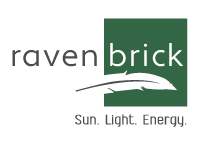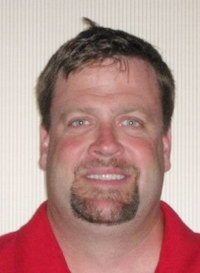Wednesday, August 12, 2009
Interview with Alex Burney, Ravenbrick

Ravenbrick (www.ravenbrick.com), which is based in Denver, announced earlier this month that the firm has scored a win for its "smart windows" at a new research facility being built for the U.S. Department of Energy (DOE) and DOE's National Renewable Energy Laboratory (NREL). We caught up with the company's CEO, Alex Burney, to gain some insight into what the firm is working on.
Can you talk about your product and what it does?

Alex Burney: The product is a smart window. Basically, it's a window which will change based on the outside temperature, to maximize the energy benefits to a person inside. It does this by becoming more reflective when it's too hot outside, yet allowing solar gain when you need it when it's cold outside. Right now, windows are conditioned to keep sunlight out in the summer, which means they're lousy in the winter. Or, windows need to be treated to work better in winter, which makes them lousy in the summer. Our window does both, which is the first of its kind.
Where did the technology for this come from, and how did the company start?
Alex Burney: There are three partners in the firm. Dr. Rich Powers, Will McCarthy, and myself. Will and Rich came from CU, and were lifelong friends. They had developed lots of intellectual property around nanotechnology, and were basically making devices which used dumb materials, to perform tasks based on external stimulus. They were initially looking at aerospace applications, but I came along, and raised money for them, and convinced them to take a more mainstream approach and tackle the building materials market instead of aerospace. We felt it was a bigger market, and that it had a shorter sales cycle, among with other advantages. We adapted the technology into Ravenbrick and some patents. Currently, the company has about nine people.
How is this different from existing smart window technology like electrochromic windows?
Alex Burney: Building materials haven't changed for about 100 years, and windows and walls are largely the same. Only within the last five years have people begun thinking about dynamic products. Our nearest competitor would be electrochromic windows from companies such as Sage Electrochromics. However, when you are trying to maximize energy efficiency and use clean technology, electrochromic's failing is that you have to run a current through the windows to achieve darkening. With us, there is no electricity involved at all. It's completely a nanotech/cleantech innnovation. We're a tenth as expensive, and three times more effective as a result. We believe Ravenbrick is the most efficacious window treatment in the world.
How does your cost compare with other technology?
Alex Burney: Electrochromic windows are about $170 per square foot, pus you have to install them. And, installation is the real trick. You have to have power on the outside wall--and walls typically aren't designed that way, so you end up having to perforate your frame to get electricity to the mechanism. We don't have any of those issues, we go seamlessly into existing windows, via a filter which is laminated onto a double pane window. There's no mechanical changes, no engineering design, and because it's a reasonably simple solution compared to what is a complicated product, our cost will be less than $20 to $25 per square foot. That's substantially less than $175 dollars. Our ROI will be in the five to seven year range, and as we work further down into the market cycle and economies of scale, we think we'll be able to provide two to three times return on investment. With electrochromic, there's no return on investment.
You mention nanotechnology--there's been some concern about putting nanotech into the marketplace, and also some smart windows rely on toxic chemicals. Can you talk about what your technology is and if there are any issues there?
Alex Burney: We can't get into the technology too much, but suffice to say, in design, it looks a lot like a peanut butter and jelly sandwich. There are a couple of outer layers, and material sandwiched in between. There's certainly no chemical nastiness in our case. There's also no power controls or other things to complicate it, which results in, truly, something as clean as a peanut butter and jelly sandwich.
How close to are you to widespread deployment?
Alex Burney: Our product is going into the new NREL headquarters building in October, and we will start delivering product on a larger scale--essentially, test and sample articles for glass companies--in probably Q4 of this year, and for certain by Q1 of next year.
You mention glass companies. How are you getting this to market--direct or through licensing?
Alex Burney: Given the recession, we're going to go to the end user initially, although we will have limited production in Q4 of at first 15000 square feet a month. Once that it saturated, we will pursue license or OEM agreements with major glass companies, of which there are thirty of those in the world.
It looks like you've got some investors in the firm already?
Alex Burney: Yes, to date, we've completed a private placement worth $3.5M. We're taking oversubscriptions now, from people who have a strategic fit. We were pleased we were able to complete a round in this climate. Half of the investors are angel investors, 80 percent of whom are Denver-based. We've also got four private equity firms involved, with three of them in Boulder and one in Boston, all of whom have typically invested in green markets, clean technology, and nanotech.
We often hear about the difficulty of taking research and putting it into production. Have you had any difficulties in that process?
Alex Burney: Luckily, we're talking about windows and walls, not the Space Shuttle. There's a low bar in terms of the level of technology involved, which is a good thing, because we've heard of people with lots of problems going from research into productization. We're relying a lot on CU and experts at CU, as well as across the Canada and the U.S. at a variety of consulting companies to knock down barriers, from the design to actual market. The fact that we did not have lots of building materials experience, probably prevented a lot more difficulties, if we had accepted established ways for doing things. Being from the outside has had significant advantages.
Finally, what's in your plan for the next six to nine months?
Alex Burney: We're obviously approaching the marketplace directly, for use in commercial buildings, and specifically Colorado installations. We'll be accelerating growth from there. Simultaneously, we're talking with glass window and OEM sales opportunities and licensing. We've got six to 8 months to prove the pudding, which is our core focus.
Thanks!